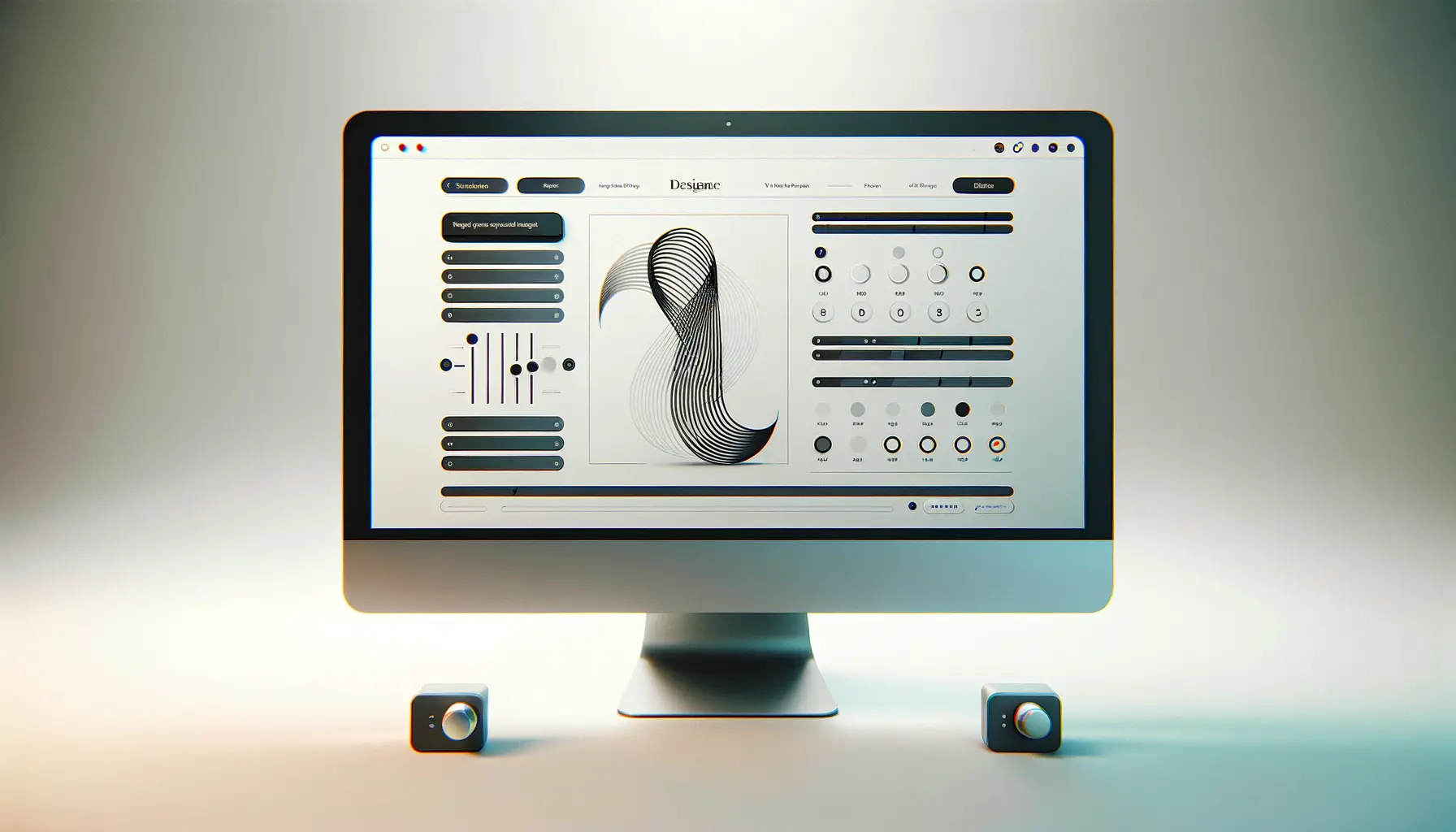Typography is likely the most powerful aspect of web design.
It establishes your brand, defines user experience, and plays a significant role in how your content is perceived.
Technology has progressed significantly over time when it comes to fonts—and one of the most persuasive innovations in recent years is the development of Variable Fonts.
These Variable Fonts are revolutionizing how we create digitally by delivering flexibility, performance, and creativity within one file.
If you’re a digital marketer or web designer, understanding how Variable Fonts function is vital to stay on top of your game.
What Are Variable Fonts and How Do They Work?
Let’s be clear about something—Variable Fonts are not a fad.
They’re a fundamental shift in typography use on the web.
In contrast to traditional fonts that are stored in separate files for each style (e.g., bold, italic, or light), Variable Fonts pack all those styles into a single tidy font file.
That equates to better performance, less bloat, and more design freedom.
But how do Variable Fonts actually work?
Instead of switching between predetermined font files, Variable Fonts use font axes to change all sorts of things like weight, width, slant, and even optical size in real-time.
So you can have thousands of font variations by simply tweaking values—without lots of different files.
Definition and evolution of variable fonts
Variable Fonts are an OpenTypeA font file format developed by Microsoft and Adobe that supports advanced typographic features. font format revealed by industry leaders like Google, Apple, Microsoft, and Adobe.
They were made public as part of the OpenType 1.8 specification in 2016.
Web designers used to have to download separate font files for each style they wanted to use.
Imagine you needed regular, bold, and italic styles—all would be separate requests, adding to load times.
Now, with a Variable Font, they are all contained within one file.
This is a revolutionary enhancement to user experience and site performance.
How variable font axes impact design
All Variable Fonts contain design axes, which adjust different aspects of the font.
They are sliders enabling you to make precise adjustments on the appearance of your text.
The most common axes are:
- Weight (wght): Adjusts the thickness of the characters.
- Width (wdth): Changes the width or narrowness of the letters.
- Slant or Italic (slnt): Tilts the text to provide a slanted appearance.
- Optical Size (opsz): Is calibrated for best readability at differing sizes.
These axes allow you to create unlimited variations of one single Variable Font, which makes your typography more flexible and inventive.
Comparison with conventional font types
If you’ve ever worked on a project where you had to use four or more variations of the same font, then you know the chaos it causes.
Traditional fonts occupy multiple files—one for each style.
This slows down your site, especially on mobile or slower connections.
Here’s a quick comparison:
- Traditional Fonts: Multiple files, larger overall size, less design control
- Variable Fonts: Single file, smaller overall size, full design control
By switching to Variable Fonts, you’re reducing the number of HTTP requests and optimizing the user experience.
Browser support and compatibility issues
One of the first questions people ask is: “Are Variable Fonts supported everywhere?” Thankfully, the answer is mostly yes.
Most modern browsers like Chrome, Firefox, Safari, and Edge support Variable Fonts fully.
Mobile browsers also follow suit.
But older browsers might not render them correctly.
That’s why it’s not a bad idea to declare fallbackA backup font or style used when the preferred font is not available or supported. fonts in your CSS just in case.
Here are a few things to keep in mind:
- Use feature queries to conditionally apply Variable Fonts only when supported.
- Test on several browsers and devices.
- Have a fallback stack ready to offer visual consistency.
In conclusion, Variable Fonts offer tremendous advantages with minimal disadvantages.
With continuous support, the time to start using Variable Fonts in your projects is now.
So, now that you understand what Variable Fonts are and how they work, do you want to find out why they are a game-changer when it comes to modern web design?
Let’s proceed to the benefits they offer for your website in the next section.
Variable Fonts combine multiple font styles into a single file, reducing load times and enabling fluid design control through adjustable font axes.
Benefits of Variable Fonts in Web Design
When it comes to building fast, beautiful, and accessible websites, every decision you make matters—down to your typography.
Variable Fonts are not just about aesthetics; they deliver real performance and UX gains.
Whether you’re building a fashionable portfolio site or a high-traffic ecommerce site, adopting Variable Fonts can truly elevate your web design strategy.
So why are designers and developers making the switch?
Let’s discover.
Improved performance and page speed
Speed is the life on the web.
Variable Fonts can really reduce your site’s load time.
Instead of downloading a bunch of font files—like regular, bold, italic, and bold italic—you download a single file.
This leads to:
- Fewer HTTP requests
- Smaller total file size
- Faster initial page rendering
Google’s Core Web Vitals now take speed and performance into account as core ranking signals, so incorporating Variable Fonts can even boost your SEO.
Mobile network users also benefit from faster page loads, which means lower bounce rates and higher engagement.
Greater design flexibility and creativity
Ever been held back by fixed font weights like Light, Regular, and Bold?
Variable Fonts leave those restrictions in the past.
You can now finely adjust font weight, width, slant, and more using CSS.
This opens up creative freedom to:
- Align brand identity with accuracy
- Create smooth animations and transitions
- Respond to user input with dynamic typography
Variable Fonts allow you to be more creative without sacrificing your designs’ consistency across different screen sizes and devices.
Reduced HTTP requests and file sizes
Every HTTP request affects your page speed.
The traditional font stacks download separate files for each style.
Assume you have four font styles—that is four requests.
But with Variable Fonts, it’s all in one.
This streamlined approach reduces latency and bandwidth usage.
Here’s how that works for your site:
- Fewer returns to the server
- Less data use—especially important on mobile
- Faster loading across all network speeds
This is particularly well-suited to global audiences whose internet speeds may be patchy.
A single small Variable Font file is infinitely more streamlined than having a series of enormous files.
Better accessibility and responsiveness
Accessibility is no longer something to be achieved—it’s something to be prioritized.
Variable Fonts can make text more readable for users with visual impairments or dyslexia.
Designers can adjust text weight and spacing without having to switch font families.
This means better support for:
- Text scaling and zooming
- High contrast modes
- Responsive typography on all devices
Want to make your site accessible and usable?
Variable Fonts give you the flexibility you need to customize your typography without compromising design integrity.
Now you see—Variable Fonts aren’t just a clever design trick.
They’re functional, effective, and powerful.
In the next section, we’ll explore how to implement Variable Fonts on your own site with ease.
Beyond style, Variable Fonts deliver performance, accessibility, and creative freedom—empowering designers to build faster and more flexible web experiences.
Using Variable Fonts on Your Site
Are you ready to start using Variable Fonts on your website?
Great choice!
Not only do they improve performance and design flexibility, but they’re also quite easy to set up.
As a front-end developer or as a hands-on designer, it’s simpler than you’d imagine to start with Variable Fonts.
So let’s go through it step by step.
How to load variable fonts via CSS
You can include Variable Fonts through the @font-face declaration, just as you would with any web font.
The only difference is specifying the font variation settings.
Here is a basic example:
@font-face { font-family: 'InterVariable'; src: url('fonts/Inter-VariableFont.woff2') format('woff2-variations'); font-weight: 100 900; font-style: normal;}After you have defined the font, you can apply it to your CSS like this:
body { font-family: 'InterVariable', sans-serif; font-weight: 400;}This allows you to access a complete set of weights and styles from a single file—making Variable Fonts a highly efficient solution.
Using font-variation-settings effectively
The font-variation-settings property gives you precise control over the behavior of a Variable Font.
You can modify properties like weight, width, and slant directly.
Here’s an example:
h1 { font-variation-settings: 'wght' 700, 'wdth' 75;}Common axes are:
- ‘wght’: Weight
- ‘wdth’: Width
- ‘slnt’: Slant
- ‘ital’: Italic
- ‘opsz’: Optical size
Not all fonts work with all axes, so check the font documentation or test the font in a browser-based tool before applying styles.
Using Variable Fonts without knowing the supported axes can lead to styling issues or browser fallback defaults.
Declaring fallback fonts and styles
Most modern browsers are able to use Variable Fonts, but it’s always best practice to declare fallback fonts.
That way, your design will be okay even if the main font isn’t loaded.
Example:
body { font-family: 'RobotoFlex', Arial, Helvetica, sans-serif;}Fallbacks offer readability and maintain brand consistency on platforms and devices as well.
Don’t underestimate the importance of this small but vital step when working with Variable Fonts.
Optimization hints for font performance
In order to get the best performance out of Variable Fonts, bear these optimization hints in mind:
- Use WOFF2 format for best compression
- Subset your font to remove unused characters
- Host fonts locally for faster delivery
- Use font-display: swap; to avoid invisible text
- Combine with lazy loading techniques if necessary
These best practices can improve page load times and provide smooth text rendering throughout your site.
Variable Fonts can deliver both style and speed—when implemented smartly.
Avoid these common mistakes
Although Variable Fonts are powerful, there are some traps you should avoid:
- Using axes that your font does not support
- Overloading variations and damaging performance
- Failing to specify fallback fonts
- Forgetting about accessibility factors such as contrast and readability
Take the time to experiment with how your Variable Fonts look on different screen sizes and devices.
It is always the extra effort that is worthwhile.
With this understanding of how to use Variable Fonts effectively, it is now time to look at how you can actually excel at their design potential.
In the next section, we will examine best practices in designing with Variable Fonts.
To implement Variable Fonts successfully, always check font axis compatibility and declare fallbacks to ensure consistent rendering across browsers.
Best Practices to Design with Variable Fonts
Using Variable Fonts is more than just adding them to your stylesheet—it’s figuring out how to leverage their enormous potential and create engaging, interactive, and readable designs.
To get the maximum out of them, however, you must approach your typography both creatively and purposefully.
Here are the best practices to use when designing with Variable Fonts.
Choosing the right variable font for your brand
Not all Variable Fonts are created equal.
Some have only a few axes to work with, whereas others give you immense freedom of design.
When selecting a font for your brand, consider the personality and tone you want to convey.
Ask yourself:
- Does the font support the axes that I need (weight, width, slant, etc.)?
- Does it look good on various screen sizes?
- Is it legible in small and large sizes?
Fonts like Roboto Flex, Inter, Recursive, and IBM Plex Sans Variable are an excellent starting point with a modern, adaptable appearance.
Make sure the font is appropriate for your brand identity and readable on all platforms.
Utilizing animation and transitions with axes
One of Variable Fonts’ coolest capabilities is animating font properties.
You can create great transitions by varying axes like weight or width on hover, scroll, or user input.
For example:
h1:hover { font-variation-settings: 'wght' 700; transition: font-variation-settings 0.3s ease;}Use animation judiciously—avoid too flashy transitions that might divert focus from your content.
Used properly, animations with Variable Fonts can give your site a clean and interactive feel.
Creating responsive typography with fluid scaling
Variable Fonts are responsive design masters.
Instead of switching between pre-defined weights or styles, you can scale your typography fluidly as screen size changes.
Combine media queries or newer techniques like clampA CSS function that sets a value within a defined range using minimum, preferred, and maximum values.() with font variation axes to get adaptive, fluid typography.
h1 { font-size: clamp(2rem, 5vw, 4rem); font-variation-settings: 'wght' 300;}This makes your design readable and look great on any device—desktops through mobile phones.
Finding the balance between aesthetics and readability
Just because you can tweak every aspect of a font doesn’t necessarily mean you should.
Good design is finding a balance between how something looks and how it works.
Use Variable Fonts to bring clarity, not confuse the reader.
Consider the following:
- Maintain a consistent weight and width range across sections
- Use contrast to highlight headings, but not excessively
- Test readability at various font sizes and resolutions
Remember, the main goal of using Variable Fonts is to improve the user experience—and not just to prove technical know-how.
Prototyping and testing tools and resources
Before you roll out Variable Fonts into production, test your design rigorously.
There are various tools available that can help you prototype and adjust typography settings:
- Axis-Praxis: A browser-based tool to experiment with variable font axes
- Google Fonts: Offers free, web-safe Variable Fonts with live preview
- Font Gauntlet: Great for testing advanced axis settings
- CSS Type Set: Handy for crafting clean, responsive font styling
These tools help you visually explore the possibilities of Variable Fonts and make more knowledgeable design decisions.
Now that you have a solid understanding of best design practices, it’s time to look ahead.
In the next section, we’ll learn how Variable Fonts are revolutionizing the future of web typography—and how you can stay ahead of the curve.
Use responsive techniques like clamp() with font axes to achieve adaptive typography that feels natural across devices.
Future of Variable Fonts in Web Typography
Variable Fonts have already changed how we design digital typography—but their future is just beginning.
With more developers, designers, and brands embracing this technology, it’s becoming more and more apparent that Variable Fonts are here to stay.
They’re reshaping the future of web typography with new possibilities for personalization, productivity, and creativity.
So, where does this innovative technology go from here?
Let’s take a look.
New dynamic typography trends
The future of typography is liquid, adaptable, and responsive—and Variable Fonts are at the heart of that transformation.
Designers can now experiment with:
- Scroll-dependent font transitions and animations
- Live type adjustment by user interaction
- Micro-interactions based on axis changes
With web experiences growing more interactive and immersive, Variable Fonts provide the tools to offer typography that adjusts and evolves in real-time.
How variable fonts affect branding
Always in search of ways to differentiate and leave lasting impressions, brands now have the means to express their identity more easily with Variable Fonts.
Imagine typography that shifts effortlessly as you scroll, or weight that changes to express tone and emotion.
This opens up new terrain for creative branding.
Fonts aren’t static—they’re dynamic, breathing parts of the user interface.
Companies are now able to design brand-specific font behaviors that respond without taking up several font files or styles.
Embedding variable fonts with design systems
Modern design systems survive on scalability and consistency.
Variable Fonts provide nuanced control without undermining a brand’s visual language.
Instead of issuing several font tokens (e.g., light, regular, bold), teams can now work with continuous ranges:
- Tweak typographic hierarchy using weight or width values
- Use fluid styles that resize between breakpoints
- Construct design tokens directly linked to axis values
Adding Variable Fonts to your design system ensures flexibility without bulkiness and inefficiency in your components.
Improving accessibility with font flexibility
Accessibility is becoming a basic necessity in web development.
The accuracy to adjust typography makes Variable Fonts shine in inclusive design.
Individuals with dyslexia or visual impairments may be assisted with:
- Adaptable letter spacing and font weight
- Improved readability using optical size adjustment
- Responsive design that adjusts text based on changing view situations
As more assistive technologies and browsers become available, expect Variable Fonts to play an even bigger role in accessibility-first design.
AI and automation for font customization
AI is already affecting design workflows—and Variable Fonts are a prime candidate for automation.
Think about AI-driven systems that:
- Automatically adjust font weight based on user preference or device
- Dynamically adapt typography to react to content mood or user context
- Create custom font instances for performance or branding purposes
As design applications integrate more cognitive capabilities, Variable Fonts will continue to be ever more context-sensitive and dynamic—placing intelligent typography at the core of digital interactions.
Variable Fonts aren’t just a new convenience—they’re the core of the future of web design.
By using them now, you position your brands, your websites, and your skills at the forefront of what’s next in digital typography.
As AI and interactive design evolve, Variable Fonts will become key in delivering dynamic, personalized user experiences—be ready to integrate them early.
The Long-Term Impact of Variable Fonts on Web Design
Grabbing the maximum potential of Variable Fonts
Variable Fonts are no longer a novelty—they’re a fundamental step in the evolution of web typography.
In this article, we’ve explored how this adaptive font technology enhances performance, improves user experience, and facilitates design systems with dynamic visual identity control.
From making CSS easier to enabling innovative micro-interactions, Variable Fonts offer both technical efficiency and creative freedom.
Why designers and developers should care
Contemporary web design requires performance, responsiveness, and accessibility—all of which Variable Fonts facilitate.
Designers can adjust visual hierarchy and developers can have fewer font files to manage, cutting server load.
The flexibility of Variable Fonts on different devices and browsers is a strong advantage in today’s mobile-first environment.
Key benefits to keep in mind
If you’re still unsure whether to switch, keep in mind these persuasive arguments in favor of Variable Fonts:
- Single file supplants many static font styles
- Fewer HTTP requests and reduced total file size
- Greater design liberty through font variation axes
- Improved accessibility with adaptive typography
- Creative possibilities like animated transitions and responsive scale
Facing the future with confidence
The web is constantly evolving, and Variable Fonts will play an even bigger role in the coming years.
With growing browser support, growing demand for responsive design, and the advent of AI-powered customization, this tech will just become more of a requirement.
By incorporating Variable Fonts into your workflow today, you’re establishing infrastructure for a faster, smarter, and more expressive web tomorrow.
What you can do next
If you’re willing to make the leap, here’s a speedy action plan to begin working with Variable Fonts:
- Choose a web-safe variable font from reliable sources such as Google Fonts
- Implement the font through
@font-faceand correct fallbacks - Try out axes through
font-variation-settingsin your CSS - Test your design on devices for consistency and legibility
- Integrate the font in your design system for scalability
Finally, Variable Fonts are about something more than fonts—they’re about designing experiences that are smart, responsive, and profoundly human.
The typography of tomorrow is today.
Are you ready to define it?
By adopting Variable Fonts now, you not only future-proof your workflow but also create faster, more accessible, and expressive digital experiences.
Quality web design is key for a great website! Check out our service page to partner with an expert web design agency.
Variable Fonts: Frequently Asked Questions
Variable Fonts are a type of font that allows multiple styles (e.g., weight, width, and slant) to be condensed into a single font file, allowing for more flexibility and efficiency in web development.
By incorporating multiple font styles into a single file, Variable Fonts reduce the amount of HTTP requests and decrease overall file sizes, leading to faster page loads and improved website performance.
Variable Fonts are supported by the majority of modern browsers, including Chrome, Firefox, Safari, and Edge.
However, it is a good practice to include fallback fonts for older browsers that may lack support.
Use Variable Fonts through the @font-face declaration in CSS, specifying the font file and variations available.
Then, apply the styles using CSS properties like font-weight, font-stretch, and font-variation-settings.
Yes, Variable Fonts improve accessibility since they support accurate adjustment of text appearance, improving legibility for the visually impaired or dyslexic users using adjustable weight, width, and spacing.
Yes.
Variable Fonts enable you to animate by interpolating between multiple style variations, allowing for dynamic transitions and interactive typographic effects on the web.
You can obtain Variable Fonts from sources like Google Fonts, Adobe Fonts, and other font libraries, which offer a wide selection of variable font families for web use.
Yes, Variable Fonts are ideal for responsive design because they allow smooth typographic adaptation across various screen resolutions and sizes without needing to load multiple font files.
Variable Fonts licensing depends on the font vendor.
Some may require special licenses for web use, so it’s important to review and agree to the licensing terms for each font you use.












